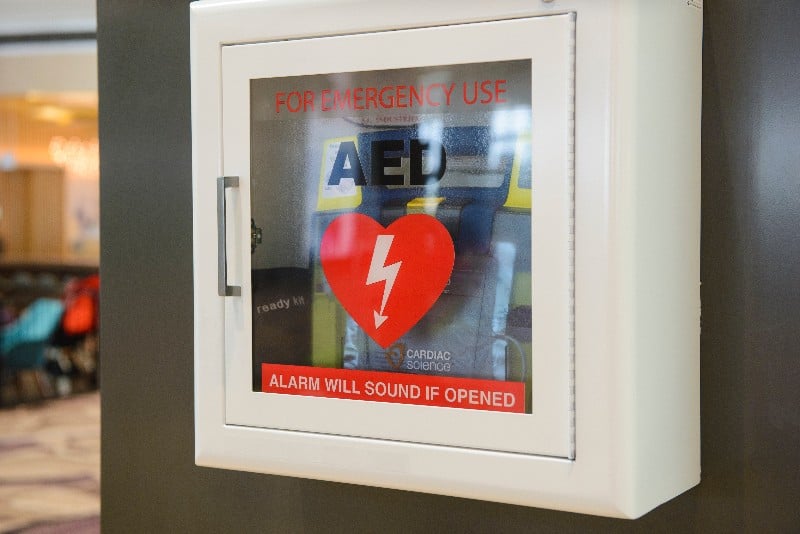
There’s been a big push over the past few years to get automated external defibrillators (AEDs) installed in public spaces, to help save lives threatened by cardiac arrest.
Unfortunately, the devices are very seldom used.
A new study finds that in nearly 1,800 cases where cardiac arrest occurred outside of a hospital, AEDs were only utilized 13 times.
In many cases, the devices were close at hand — although bystanders may not have realized that.
“Public AED availability is critical for people to be able to use them in the appropriate time and fashion,” said study lead author Dr. Mirza Khan. “However, people need to know it’s there to be able to use it. It’s not sufficient just to have them in the right places.”
Khan is a physician and medical informatician at the University of Missouri-Kansas City. His team is slated to present the findings on April 6 at the annual meeting of the American College of Cardiology (ACC) in Atlanta.
According to U.S. Centers for Disease Control and Prevention, over 356,000 cardiac arrests occur in homes or public spaces each year, and only about 10% of affected people survive.
As the ACC explained in a news release, AEDs are small, sophisticated devices placed on the chest that quickly analyze a stricken patient’s heart rhythms and then deliver a potentially lifesaving electric shock when necessary.
They “are designed to be easy for untrained bystanders to use, and many states have laws requiring these devices to be available in public places, such as airports, shopping malls, schools and gyms,” the ACC said.
But are they being used?
To find out, Khan’s team used data from a national registry to analyze 1,799 cardiac arrests that arose in homes or public settings in Kansas City between 2019 and 2022.
They also calculated how long it would’ve taken a bystander to walk to the nearest AED, based on a database mapping out where the devices could be found in the city.
Most of the cardiac arrests (85%) occurred at home. AEDs were never used in these scenarios, although manual CPR was performed by a bystander in 42% of cases, the study found.
An AED was, in fact, available within a 4-minute walk of patient’s homes in about a quarter of these cases. Experts recommend that CPR begin within two minutes of a cardiac arrest — having an AED at hand (or having a second person run for a nearby device while CPR is being conducted) could save lives.
Among cardiac arrest cases that occurred in a public setting (not the home), a bystander applied CPR in 42% of cases and an AED was used in 7% of cases, the research showed.
Nearly half of cardiac arrests occurring in public spaces happened within a four-minute walk of an AED, Khan’s team said.
“Even in the ‘optimal scenario’ in which a bystander administered CPR and the event occurred within a four-minute walk of an AED … an AED was used in only about 1 out of 4 cases,” the ACC noted in the news release.
The findings point to a need for better awareness among the public of where they can quickly access an AED, Rana said.
Luckily, many local authorities are trying to do just that.
“It’s been heartening to see the enthusiasm from local governments and organizations, who are really keen to use this work to help build up to that next level of narrowing that gap in terms of the AED usage that we’d like to see,” Khan said.
According to the ACC, its crucial that people know and understand the signs of cardiac arrest: Sudden collapse and loss of consciousness, seeming unresponsive to shouting or shaking, gasping for air or not breathing, and lacking a pulse.
Anyone seeking to help a person undergoing cardiac arrest should call 911 immediately, and administer CPR and look for an AED until medical professionals arrive.
Because these findings were presented at a medical meeting, they should be considered preliminary until published in a peer-reviewed journal.
More information
For more help on responding to and aiding someone suffering cardiac arrest, head to the American Heart Association.
SOURCE: American College of Cardiology, news release, March 28, 2024
Source: HealthDay

Leave a Reply